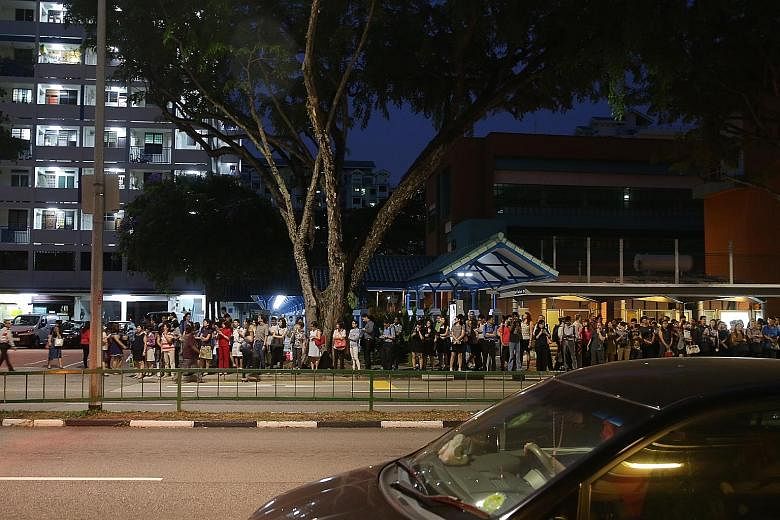Trunk bus services calling at MRT stations hit by major breakdowns will be ramped up to provide alternative travel options for commuters, Senior Minister of State for Transport Josephine Teo said.
Depending on the scale of the rail disruption, buses may also be diverted from other routes with lower demand to help ease the crunch, she told Parliament yesterday.
These options are part of an improved contingency plan recently put in place after July 7's massive breakdown of the North-South and East-West lines, which affected some 250,000 commuters during the peak hour.
Mrs Teo was responding to a question from Mr Lim Biow Chuan (Mountbatten) on whether contingency plans to handle major rail breakdowns have been reviewed.
She said a review was indeed conducted and it was found that the contingency plans of rail operator SMRT were "not adequate" to handle the scale of the breakdown. That is why it was understandable that commuters were unhappy. "The capacity of alternative travel connections between the heartland and the city needed considerable strengthening, and would have required significantly more resources beyond SMRT's to mitigate the impact," she added.
With the improved contingency plans, commuters will have two options - to either use trunk bus services that will be boosted in frequency and capacity, or to use special bridging buses, said Mrs Teo.
In major disruptions, regular bridging services - which take commuters from affected MRT stations to unaffected ones so they can continue their journey by rail - cannot be effectively implemented, she explained.
A special bus bridging plan to serve those living in major towns may be used instead. Commuters in the city can travel via alternative MRT lines to key interchange stations, such as Bishan, Paya Lebar and Buona Vista, and transfer to special bridging buses to towns such as Ang Mo Kio, Woodlands, Tampines and Choa Chu Kang. This special bridging plan will also work in the reverse direction, she noted.
Another consideration for contingencies may be to extend the operating hours of City Direct Services - buses contracted by the Government which carry commuters directly between their neighbourhoods and the city, she said.
Mr Cedric Foo (Pioneer) asked if investments could be better made to prevent major rail disruptions, through redundancy or isolating breakdowns to specific rail segments, rather than to invest in a large-scale contingency plan that would involve tapping resources of buses and drivers.
In reply, Mrs Teo said that, given the ageing rail system, resources have to be concurrently invested in preventive maintenance and improving contingency plans.
"If and when an incident were to happen, it is reasonable for commuters to expect that the management of it ought to be up to mark," she said.


